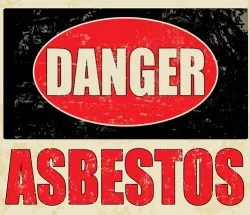 A new asbestos study has found that asbestos fibers are able to move through sand and soil, a vital breakthrough when making decisions about removal procedures and precautionary measures for this fibrous material.
A new asbestos study has found that asbestos fibers are able to move through sand and soil, a vital breakthrough when making decisions about removal procedures and precautionary measures for this fibrous material.
Leading the ongoing asbestos study is Geologist Jane Wilenbring of the Scripps Institution of Oceanography at the University of California San Diego.
The first phase of the inquiry had studied the common belief that asbestos waste piles are contained when soil is placed on top of them.
Wilenbring’s postdoctoral researcher and co-researcher of this study, Sanjay Mohanty of the University of Pennsylvania, discovered that when organic acids coat asbestos fibers they can travel through soil and sand.
“This is something that can happen in soils, where you have organic acids that are created from plants, fungi and also bacteria… [T]hese organic acids can coat the outside of the fibers and actually change the mobility of the fibers,” Willenbring told Asbestos.com.
The lab research of the asbestos study has been going for over the last couple of years, with researchers analyzing how untreated asbestos fibers move through sand.
Even though the research team found that the asbestos fibers could not move through sand, they did observe a new behavior.
Scientists found that treated asbestos fibers could move through the sand column when coated with fulvic acid, humic acid and other natural organic matter.
“We found that if we coated these fibers in organic acids, we could actually get the asbestos fibers to move through the soil,” Willenbring said.
Willenberg presented her asbestos study at the August 2016 American Chemical Society meeting in Philadelphia.
The National Institute of Environmental Health Sciences funded the ongoing asbestos study, which will hopefully heed more useful information.
Overview of Asbestos Exposure Health Complications
This new asbestos study can help prevent future cases of either asbestos lung cancer or mesothelioma, as scientists how have better understanding of asbestos behavior.
Both of these diseases are directly caused by asbestos exposure, in which patients inadvertently inhale or swallow asbestos fibers from the home or work environments.
The fibers then become embedded in the lungs, which eventually fester into chronic health problems that often result in a shortened lifespan.
Mesothelioma is an extremely rare form of lung cancer, in which the asbestos fibers attack the mucus lining of the lungs.
Asbestos lung cancer is also induced by exposure to the fibrous material, with the lungs facing the brunt of the festering cancer cells.
It is important to note that it can take up to 30 years before showing any symptoms, often resulting in latent diagnoses.
Asbestos was popularly used as a manufacturing and construction material for its fire and chemical resistant qualities. After the EPA declared asbestos to be a hazardous material in 1980, health officials and the general public became concerned with the long term asbestos health problems.
Do YOU have a legal claim? Fill out the form on this page now for a free, immediate, and confidential case evaluation. The attorneys who work with Top Class Actions will contact you if you qualify to let you know if an individual asbestos lawsuit or asbestos class action lawsuit is best for you. [In general, asbestos lung cancer lawsuits are filed individually by each plaintiff and are not class actions.] Hurry — statutes of limitations may apply.
ATTORNEY ADVERTISING
Top Class Actions is a Proud Member of the American Bar Association
LEGAL INFORMATION IS NOT LEGAL ADVICE
Top Class Actions Legal Statement
©2008 – 2025 Top Class Actions® LLC
Various Trademarks held by their respective owners
This website is not intended for viewing or usage by European Union citizens.
Get Help – It’s Free
Join a Free Asbestos Lung Cancer Class Action Lawsuit Investigation
If you or a loved one were exposed to asbestos and developed mesothelioma, lung cancer, or cancer in the lining of the lungs, abdomen or chest cavity, you may be able to take legal action against the companies responsible. Don’t delay – in most states the statute of limitations is two years to file an asbestos lawsuit after you’re diagnosed. Obtain a free and confidential case evaluation be filling out the form below.
An attorney will contact you if you qualify to discuss the details of your potential case at no charge to you.
Please Note: If you want to participate in this investigation, it is imperative that you reply to the law firm if they call or email you. Failing to do so may result in you not getting signed up as a client, if you qualify, or getting you dropped as a client.
Oops! We could not locate your form.












